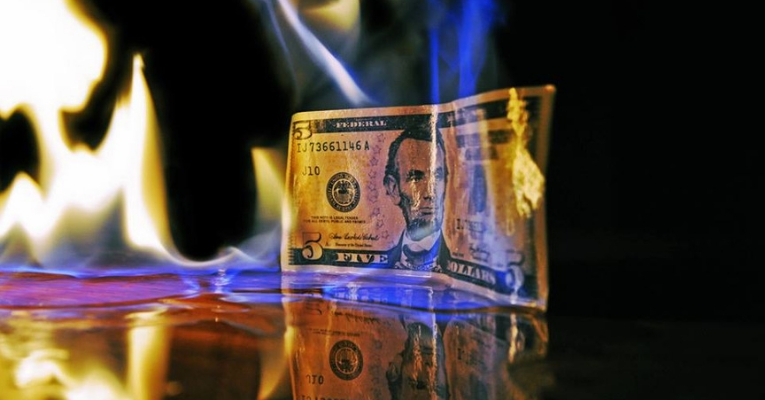News
US National Debt Tops $22 Trillion for First Time in History as Recession Looms

In the latest sign that the U.S. economy is facing deep trouble, the Treasury Department announced that public debt has topped a staggering $22 trillion.
The figure is a $1 trillion increase from last year, and a sign that the fiscal situation of the United States is growing increasingly dire.
Many analysts are pointing to increased government spending by the Trump administration paired with a $1.5-trillion tax cut that primarily benefited wealthy Americans and large businesses, accelerating a drain on public coffers while rapidly increasing U.S. budget deficits.
Such deficits are sure to lead to a growing public debt, which according to some estimates could be equal to 93 percent of U.S. gross domestic product in 2029 and a 150 percent of GDP by 2049, according to the Congressional Budget Office.
Such annual deficits have been unprecedented since the 1940s, at the dawn of the U.S. post-World War II boom. The report noted:
“Federal debt held by the public is projected to reach $16.6 trillion at the end of 2019. Relative to the size of the economy, that amount—at 78 percent of GDP—would be nearly twice its average over the past 50 years. By 2029, debt is estimated to reach $28.7 trillion, or 93 percent of GDP—a higher level than at any time since just after World War II. It would continue to grow after 2029, reaching about 150 percent of GDP by 2049.”
And as the U.S. continues to borrow trillions, interest costs are sure to bog down any hope that the country’s economy can get out of the deep red.
“Our growing national debt matters because it threatens the economic future of every American,” said Michael A. Peterson, CEO of the Peter G. Peterson Foundation budget watchdog group, in a statement.
https://twitter.com/business/status/1095616574462062592
“As we borrow trillion after trillion, interest costs will weigh on our economy and make it harder to fund important investments for our future. We already pay an average of $1 billion every day in interest on the debt, and will spend a staggering $7 trillion in interest costs over the next decade,” he added.
The national debt effectively doubled under the Obama administration, rising from $10.6 trillion when he took office to nearly $20 trillion when he left.
However, the rapid fiscal burn has effectively been a bipartisan project, with neither Democrats nor Republican seeking to end the costly wars in Iraq and Afghanistan, curb soaring military costs, nor address the rising costs of health care and Social Security in the U.S.
"@FoxNews: @realDonaldTrump: “When you have $18-$19 trillion in debt, they need someone like me to straighten it out" pic.twitter.com/hTUJ35ja0Q
— Donald J. Trump (@realDonaldTrump) August 7, 2015
And while Trump said in 2015, “When you have $18-$19 trillion in debt, they need someone like me to straighten it out,” the administration’s attempts to spur economic growth through a trade war with China and tax cuts benefiting the wealthiest Americans have shown little sign of resolving the long-term U.S. fiscal crisis.
The recent data is fueling continued speculation that a U.S. economic recession is fast approaching, as few in Washington have shown the political will to address the spiraling deficits and debt that could throw the U.S. into a period of stagflation, rife with growing inflation and high unemployment rates.
Typos, corrections and/or news tips? Email us at Contact@TheMindUnleashed.com
